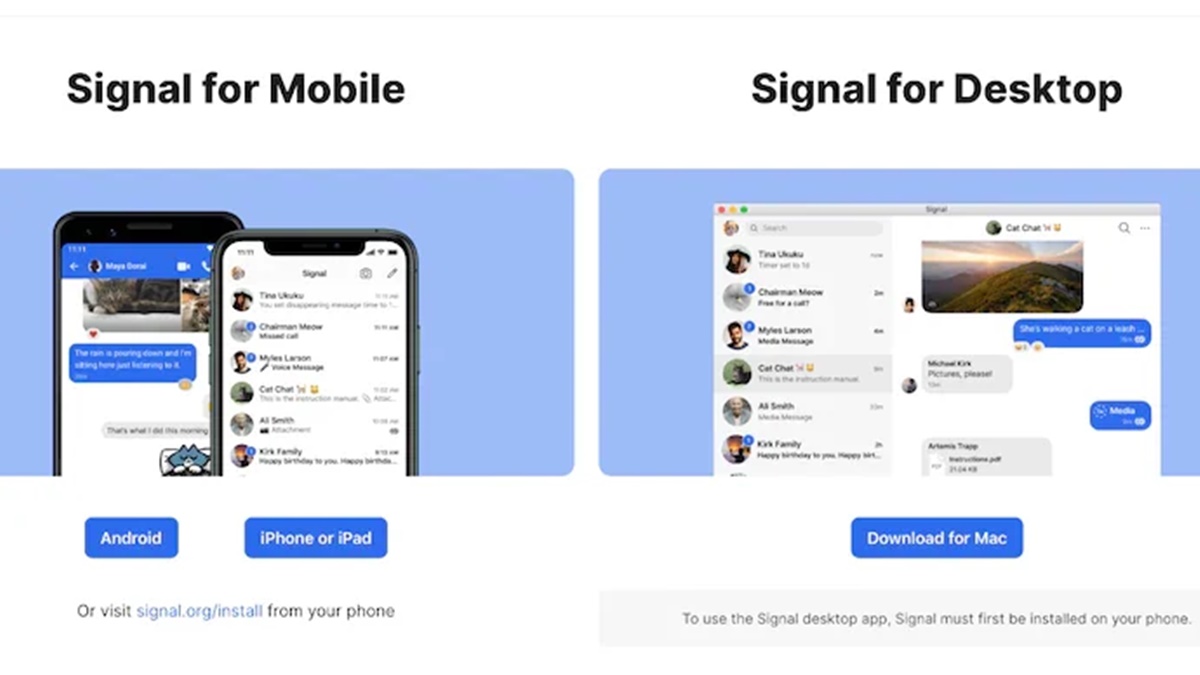What is the Invisible Web?
The Invisible Web, also known as the Deep Web or Hidden Web, refers to the vast amount of information that is not easily accessible through traditional search engines like Google or Bing. While search engines can index and display content from the surface web, which consists of publicly available web pages, they often fail to crawl and index the deeper layers of the internet.
The Invisible Web consists of dynamic web content, unindexed databases, password-protected sites, and other forms of information that cannot be easily accessed or discovered through traditional search methods. This hidden realm of the internet is estimated to be several times larger than the surface web, making it a treasure trove of valuable resources and information.
The content in the Invisible Web is generally not intentionally hidden or secretive but rather requires specific access parameters or protocols to retrieve the information. Examples of content found in the Invisible Web include academic databases, subscription-based websites, private networks, and confidential government documents.
Search engines scan the surface web by following hyperlinks and indexing web pages, making them easily searchable. However, the content in the Invisible Web requires a more targeted approach and specialized tools to access and retrieve the desired information.
It’s important to note that the term “Invisible Web” does not refer to the Dark Web, which is a part of the internet that is intentionally hidden and used for illicit activities. The Invisible Web primarily consists of legitimate and valuable information that is simply not accessible through conventional search engine queries.
Exploring the Invisible Web can be highly beneficial, especially when it comes to finding people and obtaining more in-depth information about them. By accessing the Invisible Web, you can tap into a vast array of resources and data that can help you uncover hidden details and track down individuals more effectively.
Why Use the Invisible Web to Find People?
The Invisible Web offers several advantages when it comes to searching for people. Traditional search engines may provide limited information about an individual, but exploring the Invisible Web can give you access to a wealth of resources and data that can help you find people more efficiently. Here are some reasons why you should consider using the Invisible Web for people search:
- Access to public records: Public records can provide vital information about individuals, such as their address history, phone numbers, criminal records, and more. Many public records databases are not readily available through standard search engines but can be accessed through the Invisible Web.
- Coverage of social media networks: While popular social media platforms like Facebook and Twitter can be searched using conventional search methods, the Invisible Web allows you to dig deeper and search for individuals across a wider range of social media networks. This helps you gather more comprehensive information about a person’s online presence and connections.
- Access to specialized databases: The Invisible Web contains a plethora of specialized databases that are not easily searchable through regular search engines. These databases can provide information about professional licenses, business affiliations, court records, and more, which can be crucial when conducting a thorough search on someone.
- Privacy concerns: The Invisible Web offers a layer of privacy for individuals who may not want their information readily accessible. By searching the Invisible Web, you can respect someone’s privacy by accessing only the information that is intended to be public, rather than relying on search engines that may inadvertently expose personal details.
- More accurate and targeted results: Since the Invisible Web requires specific search techniques and tools, the results you obtain are often more precise and relevant to your search. This can help you avoid sifting through irrelevant information and save time in your search for a particular individual.
By utilizing the resources and techniques available through the Invisible Web, you can increase your chances of finding people, obtaining in-depth information about them, and gaining a more comprehensive understanding of their background and online presence. However, it is essential to approach this process with caution and respect the privacy of others.
How to Access the Invisible Web
Accessing the Invisible Web requires a different approach compared to traditional web search. While search engines like Google or Bing primarily crawl and index the surface web, specialized tools and techniques are needed to delve into the depths of the Invisible Web. Here are a few methods you can use to access the Invisible Web:
- Use specialized search engines: There are search engines specifically designed to explore the Invisible Web. These search engines can access and index content that is not easily discoverable through traditional search methods. Examples include DuckDuckGo, Startpage, and Yandex.
- Utilize directory websites: Directory websites provide curated lists of hidden websites and resources on the Invisible Web. These directories categorize websites based on topics, making it easier for users to find specific information. Some popular directory websites include TorLinks, Hidden Wiki, and OnionLink.
- Use proxy servers or VPNs: Proxy servers and virtual private networks (VPNs) can help you mask your IP address and bypass geographical restrictions, allowing you to access websites and content that may be blocked or restricted in your region. By using proxy servers or VPNs, you can access parts of the Invisible Web that may otherwise be inaccessible.
- Explore academic and research databases: Academic and research databases contain a wealth of scholarly articles, papers, and publications. Many of these databases require subscriptions or institutional access, but some offer limited free access to their resources. Examples include JSTOR, PubMed, and IEEE Xplore.
- Join private forums and communities: Some valuable information and resources can be found within private forums and online communities. By actively participating in these communities and gaining trust, you may gain access to hidden content and discussions that are not publicly accessible.
It’s important to note that while the Invisible Web can provide access to a vast amount of information, it also comes with potential risks. Some websites on the Invisible Web can be associated with illegal activities, malware, or scams. Exercise caution and ensure you are using reputable and trusted sources when exploring the Invisible Web.
By employing these methods and tools, you can effectively navigate the Invisible Web, discover hidden resources, and uncover valuable information that may not be readily available through traditional search engines.
Social Media Networks
Social media networks are a rich source of information when it comes to finding people on the Invisible Web. While popular platforms like Facebook, Twitter, and LinkedIn can be searched using traditional methods, there are additional techniques you can use to uncover more comprehensive information. Here are some strategies for utilizing social media networks in your search:
- Utilize advanced search features: Many social media platforms provide advanced search options that allow you to narrow down your search results. You can filter results by location, education, work history, and more to find individuals who match specific criteria.
- Explore niche social media networks: In addition to the major social media platforms, there are numerous niche networks that cater to specific interests or industries. These networks can provide more focused results and reveal hidden connections and affiliations.
- Search for associated usernames and handles: Individuals often use the same username or handle across multiple social media accounts. If you find a person’s profile on one platform, try searching for their associated usernames on other platforms to expand your search and gather more information.
- Utilize social media analytics tools: Some online tools provide social media analytics that can help you gather insights and track a person’s online activity. These tools can provide valuable information such as post frequency, engagement, and connections, giving you a deeper understanding of an individual’s online presence.
- Connect with mutual connections: If you know someone connected to the individual you are searching for, reach out to them and see if they can provide any additional information or insights. Mutual connections can offer valuable clues and help you track down the person you are looking for.
When using social media networks for people search, it is crucial to respect privacy settings and the boundaries set by the individuals. Not all information may be publicly accessible, and it’s essential to approach your search with sensitivity and discretion.
By utilizing the advanced search features, exploring niche networks, searching for associated usernames, leveraging social media analytics tools, and connecting with mutual connections, you can effectively harness the power of social media networks to find people on the Invisible Web.
Public Records Databases
Public records databases are invaluable resources for finding people on the Invisible Web. These databases house vast amounts of publicly available information, including legal documents, government records, and official data. While some public records may be accessible through traditional search engines, many databases are specifically designed for accessing and searching this type of information. Here are some strategies for utilizing public records databases in your search:
- Utilize government websites: Many government agencies have online portals that provide access to public records. These websites may include documents such as marriage licenses, property ownership records, court records, and more. Look for specific government websites related to the location or jurisdiction associated with the person you are searching for.
- Access county or city records: Local government agencies often maintain databases of public records at the county or city level. These databases can contain information about land ownership, property tax records, business licenses, and other official documents. Search for the county or city’s official website to access these records.
- Explore online repositories: Online repositories, such as the National Archives, provide access to historical records, genealogical information, military service records, and more. These repositories can be valuable sources for finding people, especially if you are searching for information about ancestors or individuals with a historical presence.
- Search for court records: Court records can provide valuable information about individuals and their involvement in legal matters. Many court systems now have online databases that allow you to search for cases, judgments, and other court-related documents. These records may reveal information about lawsuits, convictions, divorce proceedings, and more.
- Explore specialized public records databases: There are numerous online databases dedicated to specific types of public records, such as business registrations, professional licenses, and sex offender registries. These specialized databases can help you uncover additional information about an individual’s business affiliations, credentials, and potential criminal history.
When using public records databases, it’s important to be mindful of privacy regulations and ethical considerations. Respect the boundaries of individuals and ensure that the information you access and use is intended to be public. Additionally, keep in mind that not all public records may be available online, and some may require a fee or specific authorization to access.
By utilizing government websites, accessing county or city records, exploring online repositories, searching for court records, and exploring specialized public records databases, you can tap into a wealth of information and uncover valuable insights about individuals on the Invisible Web.
People Search Websites
People search websites are online platforms specifically designed to help users find information about individuals. These websites aggregate data from various sources, including public records, social media profiles, and other publicly available information. People search websites can be valuable tools for finding people on the Invisible Web. Here are some strategies for utilizing people search websites in your search:
- Enter basic identifying information: Most people search websites allow you to search for individuals using basic identifying information such as their name, location, or phone number. Enter the available information into the search fields and let the website’s algorithms gather and display relevant results.
- Refine your search: If you have a common name or need to narrow down your search, you can utilize additional filters provided by people search websites. These filters may include options to specify age range, educational background, or previous addresses, allowing you to target your search more effectively.
- Explore family and associates: People search websites often provide information on an individual’s relatives and associates. This can be helpful in locating a person through their connections. By examining the listed family members or associates, you may find additional leads or contact information.
- Use reverse phone or email lookup: Some people search websites offer reverse phone or email lookup services. If you have a phone number or email address associated with the person you are searching for, you can enter it into the search tools to find more information about the individual.
- Consider paid options: While many people search websites offer free basic search functionality, some may also provide paid options for more in-depth reports or access to additional data. Depending on your needs, you may choose to explore these paid options for a more comprehensive search.
It’s crucial to note that not all information found on people search websites is guaranteed to be accurate or up to date. It’s always a good idea to cross-reference the information obtained from these websites with other sources to ensure its validity.
By entering basic identifying information, refining your search, exploring family and associates, using reverse phone or email lookup, and considering paid options, you can effectively leverage people search websites to find individuals on the Invisible Web.
Using Search Engines Effectively
Although search engines may not directly access the depths of the Invisible Web, they are still valuable tools for finding information about people. Utilizing search engines effectively can help you uncover hidden details and potentially lead you to resources within the Invisible Web. Here are some strategies for using search engines effectively in your search for people:
- Use advanced search operators: Search engines offer advanced search operators that allow you to refine your search queries. By utilizing operators such as quotation marks for exact phrases, site: for searching within specific websites, or filetype: for finding specific file types, you can narrow down search results and find more targeted information.
- Include specific keywords: When searching for people, it is helpful to include specific keywords related to their name, location, profession, or any unique identifiers that can narrow down the search results. Consider using variations of their names, nicknames, or maiden names to expand the scope of your search.
- Explore image search: In addition to text-based searches, utilize image search functionality to find pictures or images associated with the person you are looking for. This can potentially lead you to social media profiles or websites that feature images of the individual.
- Utilize social media search features: Search engines can be used to find individuals through social media platforms. Enter the person’s name along with the name of the specific social media platform into the search query to find their profiles or content associated with them.
- Review search engine alerts and notifications: Set up search engine alerts or notifications for specific keywords or the person’s name. This way, you will receive updates when new information related to the individual is indexed by the search engine.
Remember that search engines can only display information that has been indexed, so it’s important to explore other avenues such as the Invisible Web, public records, and social media networks for a more comprehensive search.
By using advanced search operators, including specific keywords, exploring image search, utilizing social media search features, and reviewing search engine alerts and notifications, you can maximize the effectiveness of search engines in your quest to find people on the Invisible Web.
Advanced Techniques for Finding People on the Invisible Web
When searching for people on the Invisible Web, advanced techniques can help you dig deeper and uncover more information. These techniques go beyond traditional search methods and require a more targeted approach. Here are some advanced techniques you can use to find people on the Invisible Web:
- Utilize advanced search operators: Advanced search operators, such as AND, OR, NOT, and parentheses, can help you refine your search queries and narrow down the results. By combining keywords and using boolean operators, you can create more precise and targeted search queries.
- Explore specialized search engines and directories: There are specialized search engines and directories that specifically focus on accessing and indexing content from the Invisible Web. These platforms cater to specific types of information or industries, making them valuable tools for finding people with unique backgrounds or interests.
- Observe domain-specific searches: Different types of information may be found on specific domains or websites. By using domain-specific search techniques, such as site: or domain: operators, you can limit your search results to specific websites or types of content that may have information about the person you are searching for.
- Employ targeted social media searches: Don’t limit yourself to traditional search engines when it comes to social media searches. Instead, utilize social media-specific search engines or advanced search options on popular platforms to search for individuals using keywords, usernames, locations, hashtags, or even specific groups or communities they may be a part of.
- Investigate online forums and communities: Online forums and communities can be a goldmine of information, especially when searching for individuals with specific interests or affiliations. By actively participating in relevant forums or communities, you can gather insights and potential leads that may help you track down the person you are searching for.
Remember to approach advanced techniques with caution and respect for privacy. As you delve deeper into the Invisible Web, it’s essential to navigate ethically and responsibly, ensuring you do not violate any legal or ethical boundaries.
By utilizing advanced search operators, exploring specialized search engines and directories, observing domain-specific searches, employing targeted social media searches, and investigating online forums and communities, you can enhance your search capabilities and increase your chances of finding people on the Invisible Web.
Tips for Ensuring Privacy and Security While Searching
When conducting searches on the Invisible Web, it’s important to prioritize privacy and security to safeguard both your personal information and your online activities. Here are some valuable tips for ensuring privacy and security while searching:
- Use a secure and private browser: Opt for a secure and privacy-focused browser that offers features like tracker blocking, encryption, and incognito mode. This helps protect your browsing activity from being tracked and monitored by third parties.
- Consider using a virtual private network (VPN): A VPN encrypts your internet connection and routes it through a secure server, masking your IP address and ensuring your online activities remain private. This is especially important when accessing the Invisible Web, as it helps protect your identity and location.
- Regularly clear your browsing data: Clearing your browsing data, such as cookies, cache, and search history, can help maintain your privacy. This prevents search engines and websites from tracking your online behavior and personalizing search results based on your past activities.
- Be cautious with sharing personal information: When interacting with people search websites, social media platforms, or other online communities, avoid sharing excessive personal information. Limit the amount of information you disclose to protect your privacy and prevent potential misuse.
- Verify the credibility of websites and sources: Always validate the credibility of the website or source you are accessing when searching on the Invisible Web. Be cautious of websites that appear suspicious, contain malware, or attempt to collect personal information. Stick to trusted sources to minimize risks.
- Avoid clicking on unfamiliar links: Be selective when clicking on links, especially from unknown sources. Phishing attempts and malware can be prevalent on the Invisible Web. Verify the legitimacy of websites and links before clicking on them to avoid potential security threats.
- Stay informed about privacy and security updates: Keeping yourself updated on the latest privacy and security practices can help you navigate the Invisible Web more securely. Stay informed about changes in privacy policies, best practices for protecting your personal information, and emerging security threats.
By following these tips, you can enhance your privacy and security when searching on the Invisible Web. Remember to always exercise caution, maintain vigilance, and prioritize your safety throughout the search process.




